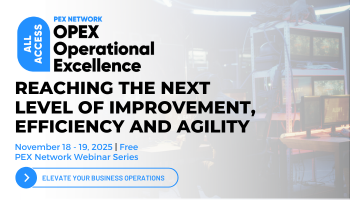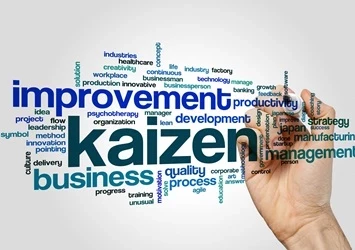How and why to build a process center of excellence
Explore the benefits and challenges of running a process center of excellence
Add bookmark
Processes are the backbone of modern businesses. Typically spanning primary, support and management, processes play a vital role in the efficient and effective functioning of an organization. As the importance, scale and diversity of business processes continues to increase, more organizations are exploring the concept of building and running their own process center of excellence (CoE).
A CoE is a team that has been mandated to provide leadership, best practices, establish a strong community and drive technical deployment support and training in an organization. A process COE is dedicated to helping a business measure, manage and improve its process-focused endeavors.
Join the PEX Network community

Don't miss any news, updates or insider tips from PEX Network by getting them delivered to your inbox. Sign up to our newsletter and join our community of experts.
Learn MoreWhen and why to build a process CoE
Once a company has decided that bussiness processes are a central component of how they run their business, it becomes time to establish a process CoE, Caspar Jans, director Celonis process management, tells PEX Network. “This typically happens after a company reaches a certain size or degree of complexity.” The reasons why a business might want to run a process CoE vary from company to company, but in general, these companies have understood that the business process concept is a crucial part of running, managing and optimizing a complex organization. “The CoE will help to install this mindset throughout the organization,” Jans says.
When adopting technology to enable a business to change, it is important to recognize that it is not just technology that you are adopting, but new ways of working, adds Steve Ponting, pre sales director at Software AG. “Organizations often fail to realize the level of effort and complexity associated with business process management (BPM) and process mining projects.” The creation of a process CoE provides a small, focused team with the requisite knowledge and expertise to support the adoption of process excellence by the wider organization – enabling an organization to accelerate time to value, Ponting says.
“When companies embark on big transformations, they need a way to accelerate speed, keep track of projects through a centralized platform and share best practices across the organization,” says Ekaterina “Katie” Curry, managing director and head of operations, multifamily/leasetrack, Millennial Specialty Insurance. A process CoE can assist with each of these three areas, and while it may seem counterintuitive, smaller/growing companies can benefit tremendously from process CoEs too, she adds. “They help them design robust, efficient processes and act as a learning center while team members get upskilled on process best practices.”
Benefits of a process CoE
A process CoE ensures that business transformation frameworks are applied consistently with the appropriate governance and controls in place, Ponting says. “By standardizing the approaches taken, the CoE supports adoption of process intelligence and enables the organization to improve and optimize resource usage through quality improvements and waste reduction.”
A process CoE delivers consistency of documenting the digital twin of an organization (DTO), offering transparency in the ways of working and the internal alignment of resources to achieve the desired strategic targets, according to Jans. “This means that the entire organization is aligned in the way that they deal with the management, optimization and governance of the processes that are being executed on a daily basis.”
There are also process excellence democratization and accessibility benefits, says Curry. “Everyone can become a process expert and drive incremental improvement in their area regardless of their role in the company.” Likewise, people can be upskilled with process knowhow including current/new tools and methods, she adds. Furthermore, a CoE equips departments to enhance compliance and risk management, not only in terms of regulatory compliance but compliance to standards such as ISO9000, says Ponting.
Ramnath Natarajan, Johnson Controls, discussses running an automation CoE
Process CoE challenges
Despite the advantages offered by process CoEs, there are a number of challenges to consider. For Jans, the biggest challenges center around insufficient mandates, technical overfocus and forming a strong process community within a company. “If the CoE does not have any mandate to initiate process documentation, process harmonization or standardization, it will eventually halt progress.”
If there is too much focus on the technical side of process management (which very often manifests itself via a strong focus on automation) instead of also on the human side of process management, the level of adoption of a process-centric way of working will be fairly limited.
“Finally, a CoE can never (and should never) do everything by themselves. It needs to form a community of people that support the process management cause and that will help the CoE to roll out all required activities, policies and procedures throughout the organization. Without this community, the CoE will be rowing upstream all the time and eventually deplete its staff.”
Another recurring obstacle with CoEs is one of perceived long-term value, says Ponting. “Most of the work of the CoE is not visible to the wider organization and therefore ensuring continued support and investment can be a challenge. Effective KPIs and metrics can be a solution to this, providing an evidenced, quantitative approach to measuring the value, he adds. “However, in order to get to the point where long-term value is a topic, first the CoE must overcome the hurdles of creating momentum and building a portfolio of process-oriented projects.”
The change management issues associated with running a process CoE as well as the monetary investment required to get a process CoE off the ground and successful are other challenges to consider, says Curry.
How to build and run a successful process CoE
The main key success factors for building and running a process CoE are executive sponsorship, clear and well-defined process governance and a good grasp of what communication really means, says Jans. “Without any of these three, you can start but will probably never scale. Executive sponsorship is needed to provide the proper mandate and a reasonable stable environment for the CoE to grow into maturity.” Governance is needed to ensure that the CoE is not doing all the work themselves and the communication factor enables the CoE to provide clear and relevant insights into the services they provide and the benefits these services reap for the organization, he adds.
For Curry, a business value framework that allows you to easily and transparently prioritize process reviews and improvements is important, as is clearly defining what a successful process CoE will accomplish. “Is it focused on process optimization, process redesign for efficiency, process improvement for client experience? Clarity of mission, vision and goals is critical.” It’s also crucial to have skilled process CoE team members who are leveraging bleeding age tools and available AI, as well as C-suite champions who are committed to driving change, she says.
A willingness to change and adopt new working practices and methodologies is critical to the success of a transformation program and to the success of the CoE as an enabler, Ponting says. “Evangelizing the benefits of process intelligence and the agility and focus of a CoE is paramount to overcoming resistance to change. Through alignment with line of business leaders and executive sponsors, the CoE can integrate into the functions and deliver against the business objectives. Without support, the CoE can find itself orphaned and at risk of being disbanded.”
When running a process CoE, Jans advises always putting yourself in your end users’ shoes and trying to figure out how to support and enable them more. “You can combine this with the best professional advice I ever received: You cannot please everybody at the same time, prioritize and have the bigger picture in mind, then reverse engineer your way back to the first step you must take.”
All Access: OPEX Operational Excellence 2025

Operational excellence is a set of practices that helps organizations to improve their efficiency and effectiveness. In 2025, operational excellence will be more important than ever as organizations look to reduce costs and improve customer satisfaction.
All Access: OPEX Operational Excellence 2025 from PEX Network will help professionals get an understanding of the latest developments in operational excellence, including how to identify and improve key processes, how to implement operational excellence initiatives, and how to measure the success of operational excellence initiatives.
Register Now























